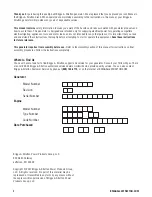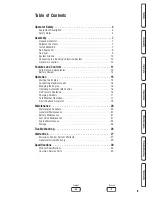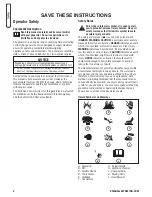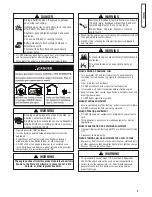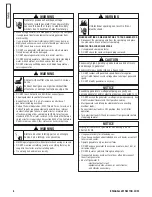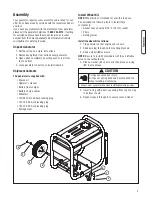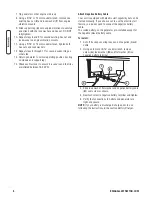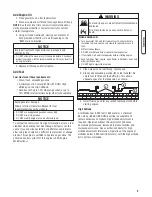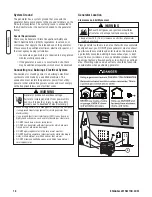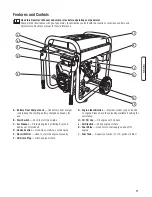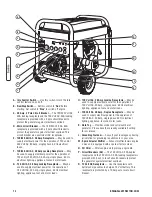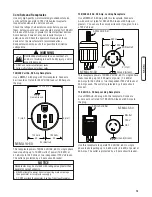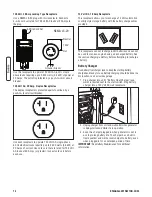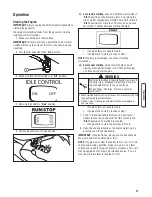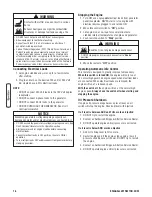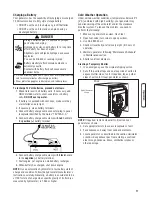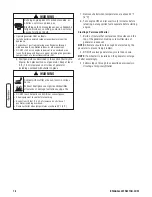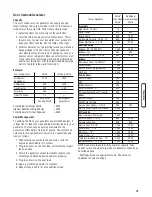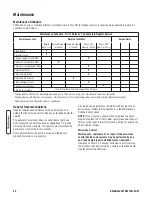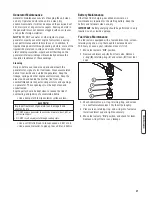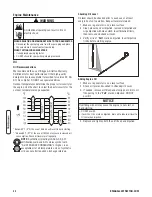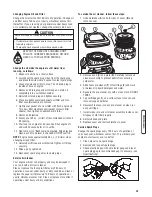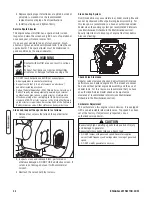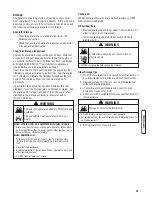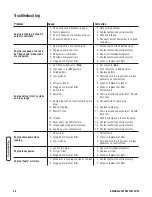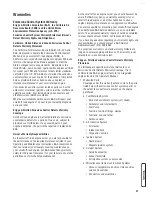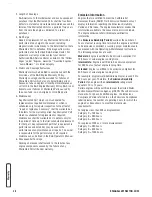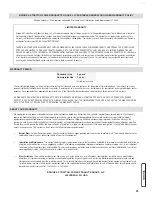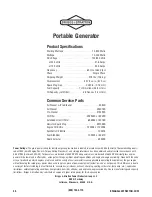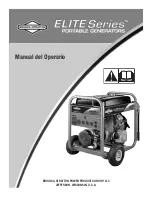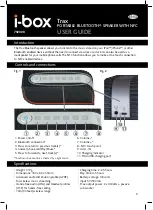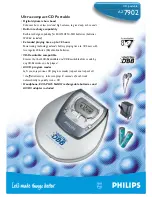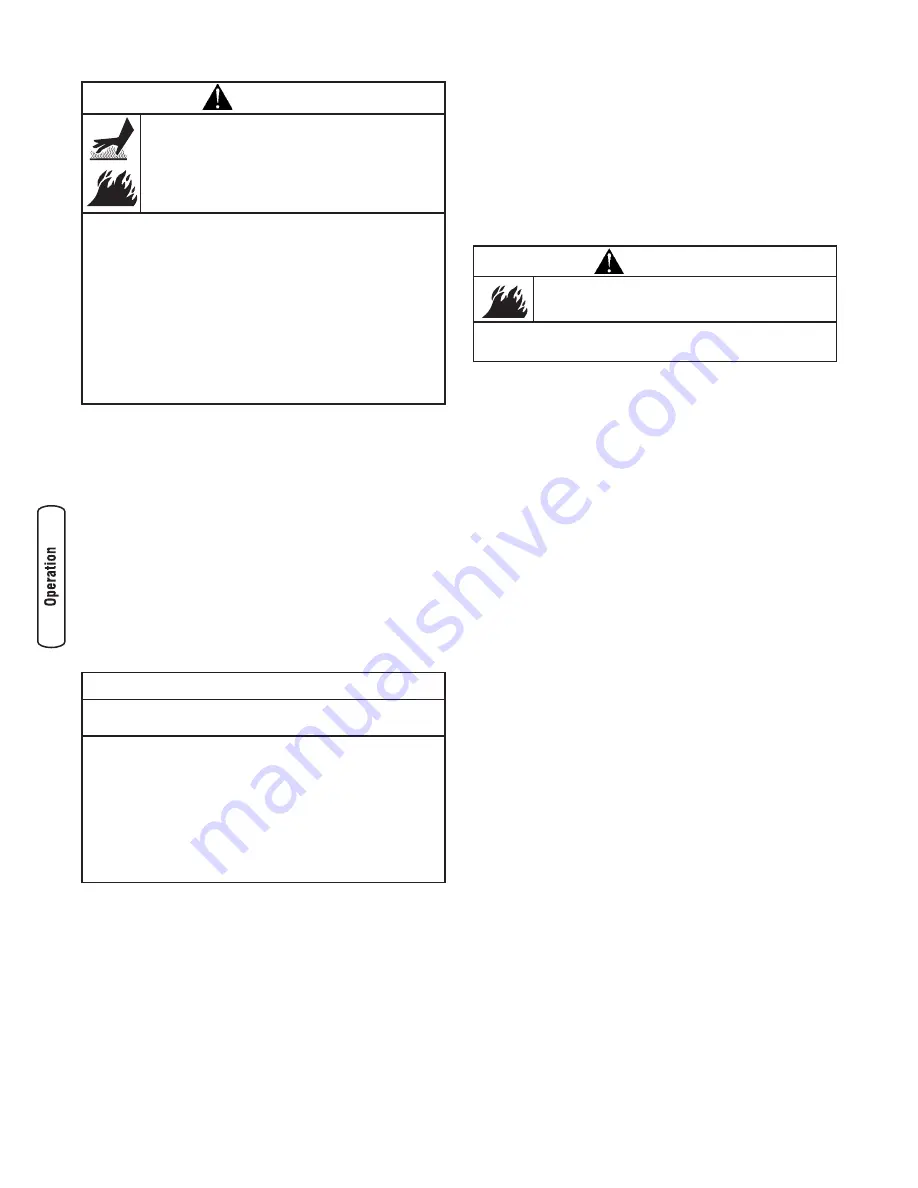
16
BRIGGSandSTRATTON.COM
Connecting Electrical Loads
1. Let engine stabilize and warm up for a few minutes
after starting.
2. Plug in and turn on the desired 120 and / or 240 Volt
AC, single phase, 60 Hz electrical loads.
NOTE:
• DO NOT connect 240 Volt loads to the 120 Volt duplex
receptacles.
• DO NOT connect 3-phase loads to the generator.
• DO NOT connect 50 Hz loads to the generator.
• DO NOT OVERLOAD THE GENERATOR. See
Don’t
Overload Generator
.
Stopping the Engine
1. Turn OFF and unplug
all
electrical loads from generator
panel receptacles. NEVER start or stop engine with
electrical devices plugged in and turned ON.
2. Move idle control switch to “
Off
” position.
3. Let engine run at no-load for several minutes to
stabilize internal temperatures of engine and generator.
4. Push run/stop switch to “
Stop
” position.
5. Move fuel valve to “
Off
” position.
Operating Automatic Idle Control
This feature is designed to greatly improve fuel economy.
When this switch is turned ON
, the engine will only run at
its normal high governed engine speed when electrical loads
are connected. When electrical loads are removed, the
engine will run at a reduced speed.
With the switch off
, the engine will run at the normal high
engine speed.
Always have the switch off when starting and
stopping the engine.
Oil Pressure Shutdown
If engine oil pressure drops below a preset level, an oil
switch will stop the engine. Check oil level with dipstick.
If oil level is between ADD and FULL mark on dipstick:
1. DO NOT try to restart the engine.
2. Contact an Authorized Briggs & Stratton Service Dealer.
3. DO NOT operate engine until oil pressure is corrected.
If oil level is below ADD mark on dipstick:
1. Add oil to bring level to FULL mark.
2. Restart engine and if the engine stops again a low oil
pressure condition may still exist. DO NOT try to restart
the engine.
3. Contact an Authorized Briggs & Stratton Service Dealer.
4. DO NOT operate engine until oil pressure is corrected.
WARNING
Contact with muffler area can result in serious
burns.
Exhaust heat / gases can ignite combustibles,
structures or damage fuel tank causing a fire.
• DO NOT touch hot parts and AVOID hot exhaust gases.
• Allow equipment to cool before touching.
• Keep at least 5 feet (1.5 m) of clearance on all sides of
generator including overhead.
• Code of Federal Regulation (CFR) Title 36 Parks, Forests, and
Public Property require equipment powered by an internal
combustion engine to have a spark arrester, maintained in
effective working order, complying to USDA Forest service
standard 5100-1C or later revision. In the State of California a
spark arrester is required under section 4442 of the California
Public resources code. Other states may have similar laws.
NOTICE
Exceeding generators wattage/amperage capacity can
damage generator and/or electrical devices connected to it.
• DO NOT exceed the generator’s wattage/amperage capacity. See
Don’t Overload Generator
in the
Operation
section.
• Start generator and let engine stabilize before connecting
electrical loads.
• Connect electrical loads in OFF position, then turn ON for
operation.
• Turn electrical loads OFF and disconnect from generator before
stopping generator.
WARNING
Backfire, fire or engine damage could occur.
• DO NOT stop engine by moving choke control to “
Choke
”
position.

